
Guests
- Justin Mikulkaresearch fellow at New Consensus.
- Zack Exleyzco-founder of New Consensus, author and former senior adviser to Bernie Sanders.
On Earth Day, we look at how the war in Ukraine gives the United States a new chance to break free of emissions-heavy steel production. Russia and Ukraine supplied over 60% of the pig iron the U.S. imported last year to make steel, some of it produced at the Azovstal Iron and Steel Works plant in Mariupol where thousands of civilians and soldiers are now blockaded. We speak to Justin Mikulka and Zack Exley, with New Consensus, a think tank working on detailed plans, such as the Green New Deal, for governments to transition to clean energy to address the climate crisis and renew their economy. They argue in a new report for The Intercept that the U.S. must transition to using green hydrogen to produce sponge iron to replace dirty pig iron. As corporate profits have gone up, “there isn’t any real incentive for the U.S. steel industry to change their business model, and that’s why we argue that we need government policies,” says Mikulka. “We’ve got a real opportunity here to start building clean industries that can make the stuff that we need without changing the composition of the atmosphere,” says Exley, one of the leaders of the 2016 Bernie Sanders presidential campaign and co-founder of Justice Democrats.
Transcript
AMY GOODMAN: Today is Earth Day. Intense fighting in Ukraine’s Donbas region has led to urgent humanitarian concerns in the southeastern city of Mariupol. While Russia has claimed it’s seized control of the city, over a thousand Ukrainian troops and civilians remain trapped inside the sprawling Azovstal Iron and Steel Works plant.
Several attempts to create humanitarian evacuation corridors have failed. The capture of Mariupol would give Russia a land corridor to Crimea, which it seized from Ukraine in 2014. The steel mill is Mariupol’s last line of defense, and among its defenders are members of the Azov Battalion, that includes far-right soldiers. It’s faced the heaviest shelling and is cut off from electricity, water and food. In a video message, Ukrainian marine commander Serhiy Volyna pleaded for help.
MAJ. SERHIY VOLYNA: [translated] We are only defending one object, the Azovstal plant, where, in addition to military personnel, there are also civilians who have fallen victim to this war. We appeal and plead to all world leaders to help us. We ask them to use the procedure of ‘extraction’ and take us to the territory of a third-party state.
AMY GOODMAN: This comes as Ukrainian officials say as many as 9,000 people may be buried in a mass grave in a village outside Mariupol.
On Thursday, President Biden met with the Ukrainian prime minister and was asked at a news conference about Putin’s claim Russian forces are now in control of the port city.
PRESIDENT JOE BIDEN: One thing for sure we know about Mariupol: He should allow humanitarian corridors to let people on that steel mill and other places that are buried under rubble to get out. To get out. That’s what any — any — any head of state would do in such a circumstance.
AMY GOODMAN: For more, we begin today’s Earth Day special with the authors of a new piece in The Intercept headlined “Russia-Ukraine War Is Another Reason to Break Free of Dirty Steel, but U.S. Companies Still Chase Profits Over Green Future,” unquote. The steel industry accounts for 8% of carbon dioxide emissions and uses about 15% of the world’s coal.
Today we’re joined by Justin Mikulka, research fellow at New Consensus, and Zack Exley, who’s the think tank’s founder and executive director. They work on detailed plans, such as the Green New Deal, for governments to transition to clean energy. Zack was a leader of the 2016 Bernie Sanders presidential campaign and is co-founder of Justice Democrats. Justin is a longtime energy reporter.
We welcome you both to Democracy Now!
ZACK EXLEY: Thanks for having us.
AMY GOODMAN: We’ve been reporting on the horror of what’s been taking place in Mariupol. It’s not clear how many people have died there. It’s believed somewhere over 10,000. Some are putting the numbers at over 20,000. But today on Earth Day, we’re going to look at the site of where 1,000 or 2,000 — several thousand people, both Ukrainian soldiers and civilians, are holed up: the steel plant. But we’re going to look at the actual — well, what is produced there. And, Justin Mikulka, we’re going to begin with you. Talk about the significance of this particular plant, one of the largest in Europe, and what it means overall, in the context of Earth Day, in the context of sustainability.
We’re just trying to hear Justin. Well, Justin, can you hear me? Justin?
JUSTIN MIKULKA: Can you hear me now?
AMY GOODMAN: OK. Why don’t we go — Justin, can you hear me now?
JUSTIN MIKULKA: Yeah.
AMY GOODMAN: OK, great.
JUSTIN MIKULKA: Sorry about that, Amy. Yeah, I believe this steel plant is a traditional one of the — you know, this is the type of facility that has made most of the steel that has built the world. And what we wrote about in our article also is that the U.S. has been relying on Ukraine and Russia for imports of the building block for the steel process, which is called pig iron. And we had already been looking at the pig iron issue because in our efforts to clean up the steel industry, the global steel industry, which we need to do — as you mentioned, it creates 8% of our emissions — pig iron, the production of pig iron, which is actually the process of taking iron ore and making it into a raw metal that is then the feedstock for making all finished steel products, that’s where the emissions — that’s where the majority of emissions are, and that’s because coal is used in that process. The majority of it is done with coal. And so, this plant is — and the Ukraine industry is one of the dirtiest, highest-emissions steel-producing industries in the country — or, in the world.
And so, when we think about reducing emissions, the U.S. industry actually is a leader in new types of production of steel that are lower in emissions. But those steel — that process, it’s called the electric-arc furnace, requires the pig iron. And we’ve been importing that dirty pig iron, the high-emissions stuff, from Russia and Ukraine. So, what we’ve been doing, while we can claim in the U.S. that, yes, we are actually producing fewer emissions than other steel producers, we’re basically outsourcing our emissions. And so, what we need to do, in a global effort but in the U.S., as well, is clean up the production of pig iron.
And we’ve been told, you know, steel has been one of the industries that’s been referred to as hard to abate. But that’s no longer true, because there now is technology using green hydrogen, which is hydrogen that’s made using renewable energy made from water. You can use that to replace the coal in the process and create something called sponge iron, which is essentially the equivalent of pig iron. So, we have the technology to do this, to clean up the steel industry, but what we’ve been doing here in the U.S. is relying on steel mills like the ones in Ukraine to produce our pig iron for us that we’ve been importing. So, the industry in itself needs to address emissions, but the U.S. industry has been sidestepping it and is not leading in any way on producing green steel with green hydrogen.
AMY GOODMAN: The CEO of a leading U.S. steel company, Cleveland-Cliffs, has said his company’s coal-fueled blast furnaces are, quote, “here to stay.” Lourenco Goncalves spoke to CNBC last month. This is what he said.
LOURENCO GONCALVES: My competition needs pig iron, but they don’t produce pig iron. They need to import pig iron. And a lot of this pig iron comes from, guess what: from Russia and from Ukraine. Ukraine, unfortunately, is being beaten down, and that’s a very sad situation. Russia is the perpetrator, should not be allowed to sell it in the United States. So, we are in a good shape, because we are self-sufficient, made in U.S.A.
AMY GOODMAN: Justin Mikulka, can you talk about the significance of what he’s saying? You write about this company in the article.
JUSTIN MIKULKA: Yeah. So, what he’s — you know, he’s making an argument that CEOs like to make, that they’re doing it the right way, and they want to point the finger elsewhere. But the fact is that that company is operating some of the remaining coal-fired blast furnaces which are required to make pig iron. So, his argument is that his pig iron, which is also — some of it is made with natural gas, as well, which is a whole different issue with methane emissions. But his argument is that some of his competitors in the U.S. have been buying Ukraine and Russian pig iron, which is true, but he’s also at the same time saying, “I’m not in any way going to stop using coal to produce pig iron here in the U.S.”
And that’s why, what we talk about in an article, other countries around the world — Germany, India, Canada — the governments are taking an active role in working with companies, like Cleveland-Cliffs in the U.S., for an example, and directly funding the replacement of these blast furnaces and directly funding projects to produce the renewable energy and green hydrogen to make green steel, to eliminate the majority of emissions from steel production.
So, what we’re seeing in the U.S. is, again, the industry itself is making exceptional profits right now. What’s happening, because of the shortage of pig iron that’s going on in the world right now, steel prices have gone way up. Pig iron prices have gone way up. And like with the oil and gas industry and a lot of other industries right now with inflation, that means corporate profits have gone up. And that’s getting passed on to the consumers. So there isn’t any real incentive for the U.S. steel industry to change their business model.
And that’s why we argue that we need government policies, we need industrial policies that address this, because we have to clean up the U.S. steel industry. And what we really need to be doing is, instead of importing dirty steel, we need to be exporting green steel to the world, because we’re going to need a lot of steel to build out the wind turbines, the solar farms for the energy transition. Steel is a wonderful material. It’s infinitely recyclable. We do a great job of recycling it in the U.S. But there’s nothing that’s going to replace it anytime soon, so we need to clean up the process of making steel.
AMY GOODMAN: Zack Exley, you’re one of the architects of the Green New Deal. You report that steel is essential for the development of renewable energy systems, like wind turbines, which are largely made from steel. Can you talk about this and how this example fits into the broader clean energy transition outlined in the GND, in the Green New Deal?
ZACK EXLEY: Yeah. Thank you so much for having us.
I mean, we already knew that the world economy was destroying the planet, but now we’re seeing also how fragile it is. And especially the U.S. economy is incredibly fragile, because both parties in this country have followed policies out of this commitment to a very esoteric, ideological kind of purism, that they believed that we should actually shut down our ability to make things. They decided that — leaders in both parties decided that, you know, Americans should just be doing nice, clean jobs at computers and not dirty jobs like working in steel mills. So they actually followed policies to shut down our ability to make our means of making a living. And the idea was that people in countries like China and Ukraine would make all the stuff that we needed.
So, now we’re seeing that when things aren’t going exactly the way everybody expected at the end of history, that it suddenly becomes very difficult for us to just get the basic products that we need. So, the silver lining in this development, in this realization, is that, you know, people in both parties now are — leaders in both parties, some of them, are starting to realize that we actually need to rebuild our ability to make stuff and make our own living. And because of what we need to do in the world economy and in the U.S. economy to stop global warming and stop greenhouse gas emissions, we’ve got a real opportunity here to start building clean industries that can make the stuff that we need without changing the composition of the atmosphere and without polluting the oceans and everything else that’s going on.
So, what we’re recommending, you know, a core tenet, a core piece of the Green New Deal and what we’re working on at New Consensus right now is trying to talk about: How do we rebuild institutions in this country that will allow us, as a nation, to build the industries that we need, the clean industries that we need? One of those institutions is financing. Right? Most industrialized countries in the world that have been successful at creating prosperity and giving a good means of making a living to most of their people, they have some system of public financing, so that when it doesn’t make economic sense for corporations to spend hundreds of billions of dollars to build a new industry that isn’t going to generate massive profits anytime soon, there needs to be a public — there needs to be a public funding system to just make that happen. And so, most countries have that. Most industrialized, prosperous countries have that. The United States does not have it.
Our strange pattern of economic development is that, usually around a big war, whether it was the Civil War or World War II, we sort of create these institutions temporarily and build a whole bunch of industries, and then shut it all down right after the crisis. So, we’re entering into a new period of crisis here with global pandemics, with global warming, and now with wars — and, you know, hopefully not another world war, but already something a little bit like it. And so, what we’re arguing is that we need some permanent institutions to allow us to build the industries that we need, the clean industries that we need, and to really also build them at the scale where the United States can contribute to a global transition. And we need to do that as fast as possible.
AMY GOODMAN: Zack, this comes as the Biden administration announced a new policy this week that requires projects funded by the $1 trillion bipartisan infrastructure package to source their construction material with U.S. steel. Will this be harder because of the pandemic and war-related supply chain issues? You say it would be cheaper if made in the U.S. with green energy. You write, “In Germany, the government is directly funding the replacement of pig iron-producing coal-fired blast furnaces with green hydrogen technology to produce sponge iron.” What can Biden do?
ZACK EXLEY: I mean, it’s difficult, because, unfortunately, the ideas around, like, how would we go about building a new clean steel industry are just starting to get into some of the circles, of the Democratic policy circles and the Republican policy circles. So, I think the thing that Biden should really do right now is get on TV and lead, you know, as a president, and say, “Look, we’ve made horrible mistakes over the past several decades. My party and the other party both did this. We shut down America’s means of making our own living and making things that we need, like steel. And so we’ve got to rebuild it. And we know that we’ve got to rebuild a steel industry that is clean, that is not spewing greenhouse gases into the atmosphere and heating up the planet. And here’s my plan to do that.”
And there are simple mechanisms that Biden could use. For example, we already have a big bank in the government. It would just — it’s in the Treasury. It’s called the Federal Financing Bank. It would just take a small tweak to change that into a bank that could not only fund the agencies of the federal government, but that could also fund something like investment in a new steel industry. We’ve got proposals for that plan on our website at NewConsensus.com. That’s the kind of thing that Biden could lead on and really get Americans into the mindset of “We’ve got to learn how to do stuff again here, and we’ve got an opportunity and a responsibility to do stuff in a way that is not destroying the planet and that gives the United States more security and gives the whole world more security.”
AMY GOODMAN: Well, I want to thank you both for being with us, Zack Exley, executive director of New Consensus, think tank working on detailed plans, such as the Green New Deal, for governments to transition to clean energy to address the climate crisis and renew their economy, and also Justin Mikulka, a research fellow at New Consensus, has reported on the energy industry for years. Zack also was one of the leaders of the 2016 Bernie Sanders presidential campaign. Oh, I do have to ask you something, Zack. I know we’re ending, but if we haven’t lost you yet, is Bernie Sanders going to run for president yet? Do you have any — know anything that we don’t?
ZACK EXLEY: I have no idea, but, of course, I hope so. You know, I hope we get a bunch of people running and providing some alternatives and leading on some of these messages that we just talked about. I think we need that.
AMY GOODMAN: Well, thanks again, again, Zack Exley and Justin Mikulka. We will link to your article at democracynow.org. It’s called “Russia-Ukraine War Is Another Reason to Break Free of Dirty Steel, but U.S. Companies Still Chase Profits Over Green Future.”
Next up, Powerlands, a new documentary made by a young Navajo filmmaker in Arizona about the displacement of Indigenous people and environmental devastation across the globe. Stay with us.

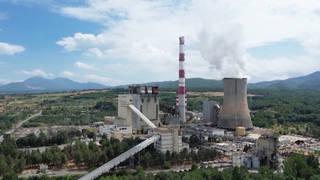
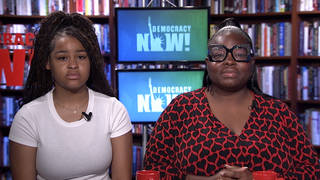
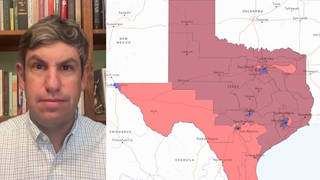


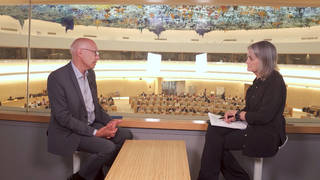
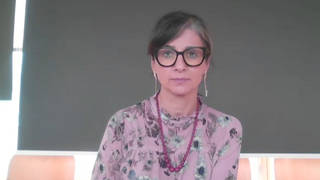

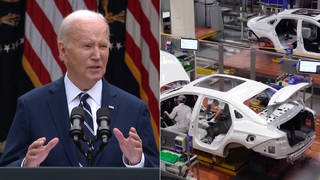


Media Options